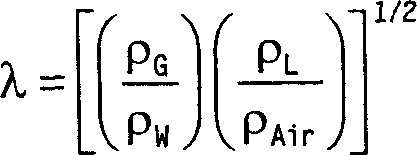Process for the purification of crude propene oxide
A technology of propylene oxide and compound, applied in the field of purification of crude propylene oxide, can solve the problems of inability to remove methanol, slow reaction and the like
- Summary
- Abstract
- Description
- Claims
- Application Information
AI Technical Summary
Problems solved by technology
Method used
Image
Examples
Embodiment 1
[0082] Crude propylene oxide comprising 52.7 wt. % propylene oxide, 44.3 wt. % methanol, 2.2 wt. % water, 1500 wppm acetaldehyde and 430 wppm methyl formate was subjected to continuous extractive distillation. The extractive distillation was carried out in a structured-packed column with a separation efficiency of 80 theoretical orders at a reflux ratio of 2 and operating at a pressure of 1.8 bar absolute. At stage 20 (counting from the bottom) 1241 g / h of crude propylene oxide was added. At the same time, 207 g / h of a 1.5% by weight aqueous solution of hydrazine were fed on stage 40 (counted from the bottom). At the top of the column, purified propylene oxide comprising 99.92% by weight of propylene oxide, 36 wppm of methanol, 70 wppm of water, less than 20 wppm of acetaldehyde and 390 wppm of methyl formate was extracted at a flow rate of 658 g / h.
Embodiment 2
[0084] Repeat Example 1, the difference is only in:
[0085] 1301 g / h of crude propylene oxide comprising 51.3% by weight of propylene oxide, 46.13% by weight of methanol, 2.0% by weight of water, 1200 wppm of acetaldehyde and 280 wppm of methyl formate were mixed with 80 g / h of 0.5% sodium hydroxide The aqueous solutions were mixed and the mixture was allowed to react in a tubular reactor at 60°C for 30 minutes before being added to the extraction column. The aqueous hydrazine solution was added at a lower flow rate of 100 g / h. At the top of the column, purified propylene oxide comprising 99.98% by weight of propylene oxide, 33 wppm of methanol, 50 wppm of water, 8 wppm of acetaldehyde and 52 wppm of methyl formate was extracted at a flow rate of 658 g / h.
PUM
| Property | Measurement | Unit |
|---|---|---|
| boiling point | aaaaa | aaaaa |
| diameter | aaaaa | aaaaa |
| length | aaaaa | aaaaa |
Abstract
Description
Claims
Application Information
 Login to View More
Login to View More - R&D
- Intellectual Property
- Life Sciences
- Materials
- Tech Scout
- Unparalleled Data Quality
- Higher Quality Content
- 60% Fewer Hallucinations
Browse by: Latest US Patents, China's latest patents, Technical Efficacy Thesaurus, Application Domain, Technology Topic, Popular Technical Reports.
© 2025 PatSnap. All rights reserved.Legal|Privacy policy|Modern Slavery Act Transparency Statement|Sitemap|About US| Contact US: help@patsnap.com


